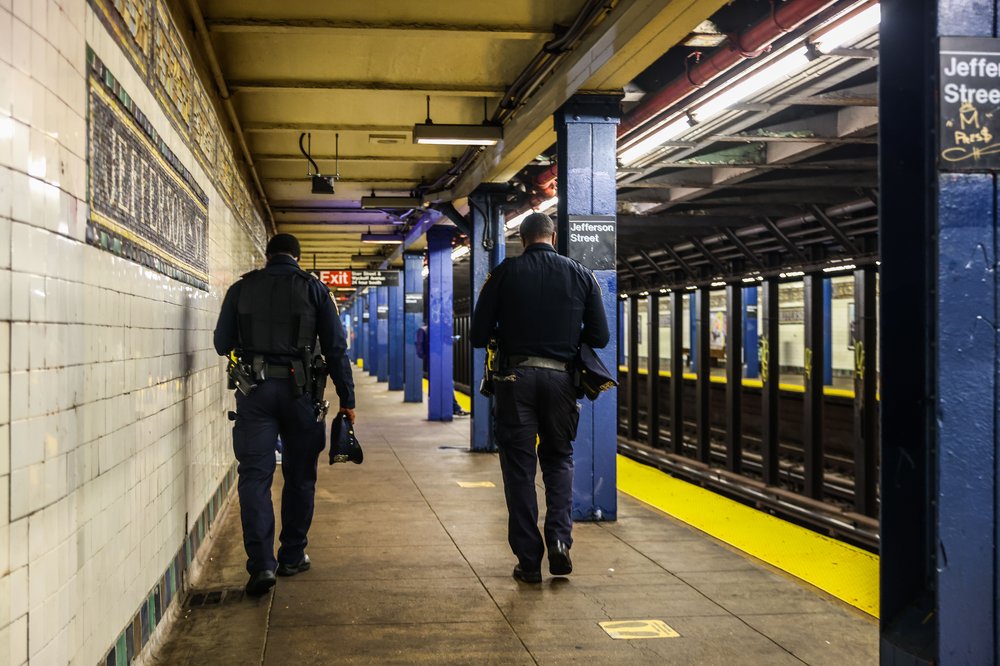Transit, NYPD officials defend subway crimefighting tactics at heated City Council hearing
Dec. 12, 2022, 5:45 p.m.
Felony crimes remain high within the subway system, with felonies up more than 30% compared to this time last year. They have dropped about 24% in the last four weeks, according to police data.

Transit and police leaders defended their ever-evolving strategy to tamp down crime in the subways during an hours-long City Council hearing Monday, which came just days after a man was fatally stabbed inside a Greenwich Village subway station.
“It’s way too early to celebrate, but I believe there is real progress that we can trace back to the actions by the mayor and the governor, with more work to go,” said New York City Transit President Richard Davey.
The hearing also came amid the rollout of new guidance from Mayor Eric Adams that empowers police officers to involuntarily remove people from streets and subways and take them to a hospital if they’re believed to be unable to meet their “basic needs” for survival. It would still be up to a medical professional to determine if should be forced to stay in the hospital to undergo mental health treatment.
Officials outlined various steps they’ve taken in recent months to bolster subway safety, including installing more surveillance cameras, deploying more police officers underground, hiring private security guards to monitor turnstiles and pairing law enforcement with clinicians and social workers to offer services to people sleeping in trains and subway stations.
They also touted a drop in transit crime last month, following a surge that has sparked anxiety among many New Yorkers. Though reports of felonies on subways are still up more than 30% compared to this time last year, they have dropped about 24% in the last four weeks, according to police data.
The proceedings at times grew heated, as Council members grilled officials on the details of their plans and questioned their use of taxpayer dollars.
Some local lawmakers challenged the MTA’s decision to spend about $1 million monthly on a combination of armed and unarmed guards at several stations with high rates of fare evasion and vandalism.
“You’re telling me we’re paying $1 million a month that we could not have any other agency within the city just close the door? Close the gate? Really?” asked Councilmember Darlene Mealy, D–Brooklyn, during one particularly tense exchange.
Davey stood by the strategy.
“We will have these security guards as long as we need them,” he said. “I hope we don’t need them forever.”
Other Council members urged officials to take a more holistic approach to subway safety by focusing on accessibility, cleanliness, and affordability. Several questioned whether the city ought to punish people for sneaking onto public transit, instead of helping them to afford their ride through the Fair Fares program, which offers discounted rates to people with lower incomes.
The hearing came as attorneys for civil rights advocates were in court asking a federal judge in Manhattan to block the mayor’s latest attempt to address the city’s mental health crisis, which is largely playing out on subway platforms and trains.
It also comes just days after police found a dead man with slash marks on his stomach in the West 4th Street subway station in Greenwich Village. The latest death marks the 10th homicide in the transit system this year, according to police.
The New York Police Department’s new acting chief of transit, Michael Kemper, said at the hearing that eight of the nine people arrested in those cases had a documented history of “emotionally disturbed behavior” — the NYPD’s term for people in the midst of a mental health crisis. He said about 40% of people accused of committing felonies in the transit system this year had a history of mental illness.
Kemper also said he was “shocked” by the “free for all” he had witnessed while patrolling the subways in recent months, where he saw multiple people ride the subway without paying — some of whom, he said, asked him to open the emergency door for them while he was in full uniform.
“Public safety begins the minute a customer enters the subway system,” Kemper said.
He added, “There can’t be signs of lawlessness the second someone walks into a subway system, for so many reasons. It’s not fair to the paying customer. It’s not fair to the MTA, who’s losing untold millions of dollars. And think about the perception that gives someone, the average citizen.”
But Councilmember Tiffany Cabán, D-Queens, criticized the focus on law enforcement in the city’s subway safety plan, especially for something as small as fare evasion.
“Perception is incredibly important, but we have to balance out actual safety,” she said. “That sounds like regurgitated ‘broken windows’ policing, which has been debunked by four decades’ worth of research and data.”